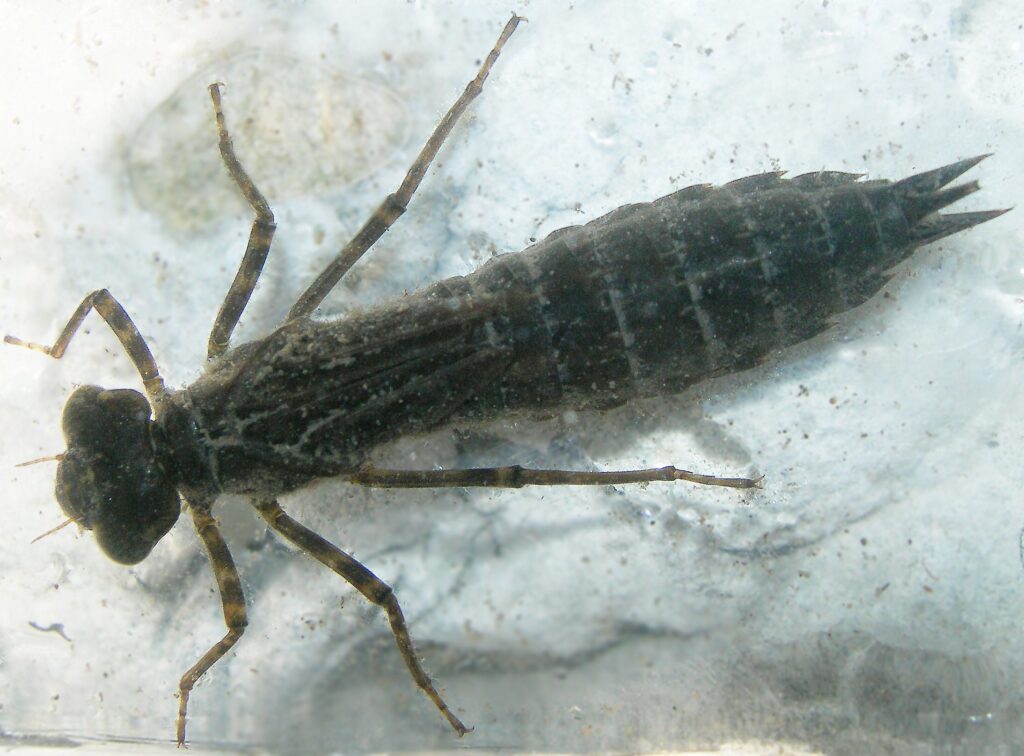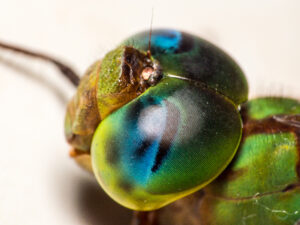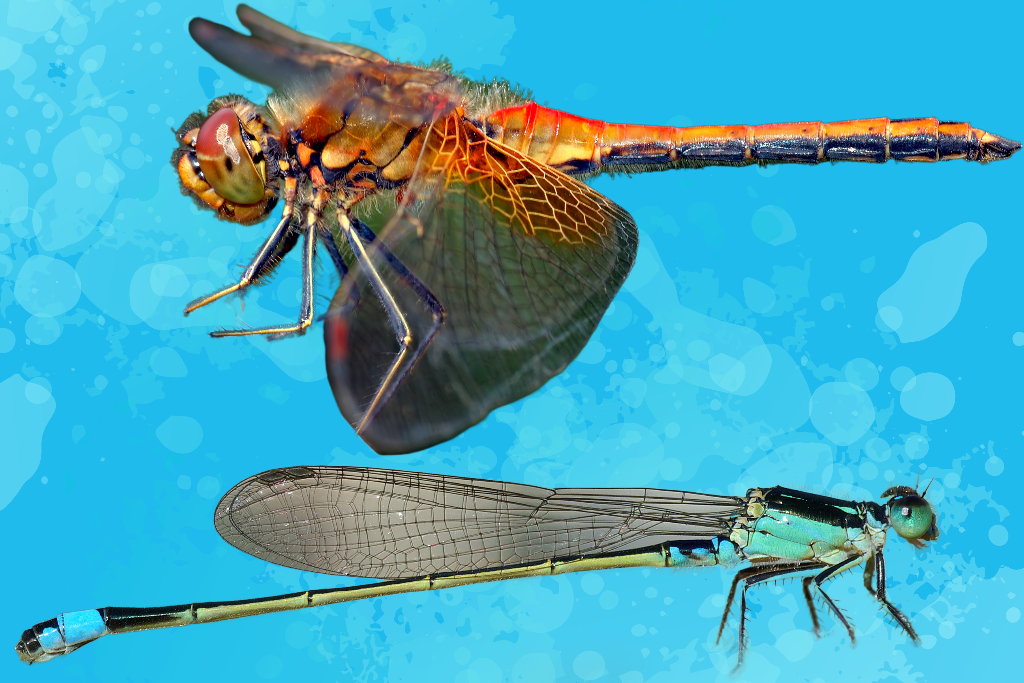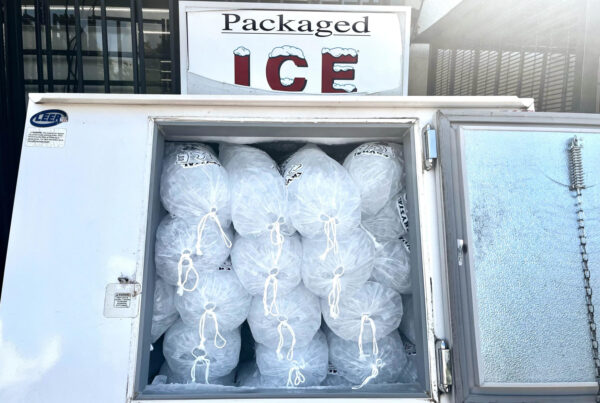The primitive flying insects dragonflies and damselflies have a lot in common: Both are in the order Odonata, with elongated bodies and two pairs of membranous wings that have lots of veins, cross veins and cells.
But Texas Standard’s go-to insect expert, Texas A&M AgriLife Extension Service program specialist Wizzie Brown, says it’s pretty easy to tell them apart.
Distinguishing dragonflies from damselflies
For one, dragonflies tend to be stouter or larger in body size than damselflies, which are very thin and delicate-looking.
“It looks like if you touch them, they’re going to fall to pieces,” Brown says.
But the simplest way to tell them apart may be to observe how they hold their wings while at rest. Dragonflies hold their wings out to the side – so it kind of gives them a “t” or cross shape. Damselflies hold their wings at rest kind of over their abdomen – so they just look like one elongated piece.
However, Brown points out they tend not to perch too much.
“They spend a lot of their time flying around. They mate while they’re flying; they capture food and eat while they’re flying,” Brown says. “Because if they rest, then that essentially is making them a target for something else to eat.”
If you aren’t able to catch a glimpse of the insect at rest, another way to tell a dragonfly from a damselfly is to observe their flight.
“The damselflies aren’t as good of fliers as dragonflies,” Brown says. “If you’ve ever tried to capture a dragonfly for an insect collection, it can be very frustrating. Whereas damselflies, since they are more delicate and thin, they don’t have as strong of wing muscles, and they get blown around by the wind more. And so they’re not nearly, I guess, as graceful as the dragonflies when they’re flying around.”
Both dragonflies and damselflies come in a variety of colors: yellows, reds, blues, oranges and greens. However, male damselflies typically have prettier wings and are more colorful than their female counterparts, which are typically a brownish color.
“They’re trying to show off for the female and attract a mate and all that good stuff,” Brown says.
Dragonfly and damselfly habits and habitats
Both dragonflies and damselflies have an aquatic immature stage during which they hunt for food in the water.

The aquatic stage of a dragonfly.
“They have this super cool mouth part. It looks like a giant spork for a mouth part, and they can actually shoot it out, stab whatever it is that they’re feeding on, and then they can draw it back to them and they will feed on other insects,” Brown says.
Brown says they’re great for controlling mosquito populations but that they also eat much larger things, like tadpoles or even small fish. They also can be used for kind of gauging water quality.
“So if you have a good population of dragonfly and damselfly larvae in a body of water, that typically means that that water quality isn’t polluted,” Brown says – though she emphasizes it may not be true in every case.
While adults are land dwelling, they still tend to hang out near bodies of water. And they are still predators, with large eyes that help them see what’s going on around them. When capturing prey, dragonflies have legs that look a bit like a basket. Damselfly legs are more out in front of their body instead of underneath.

A few wild facts
Both male dragonflies and male damselflies set up territories for mating purposes. And if a female that has already mated enters their territory …
“There are actually some dragonflies and damselflies that have a reproductive structure that can enter the female, remove the stored sperm that might be in the sperm storage area, and then they will mate with the females,” Brown says. “So they know that their genetic information is the one that she’s going to be using, which is insane.”
And if they look somewhat ancient in their structure – that’s because they are.
“They were actually on Earth more than 200 million years ago, which puts them before the dinosaurs,” Brown says. “So dragonflies and damselflies are primitive insects, have been around a really, really long time.”
And while you may think dragonflies today are pretty big – some have wingspans of about five inches – that’s nothing compared to the old days.
“The largest dragonfly to ever have lived was in the Permian period – so a really, really long time ago. But it had a wingspan of over two feet. So that would be a massive, carry-your-small-dog-away kind of dragonfly,” Brown says.














